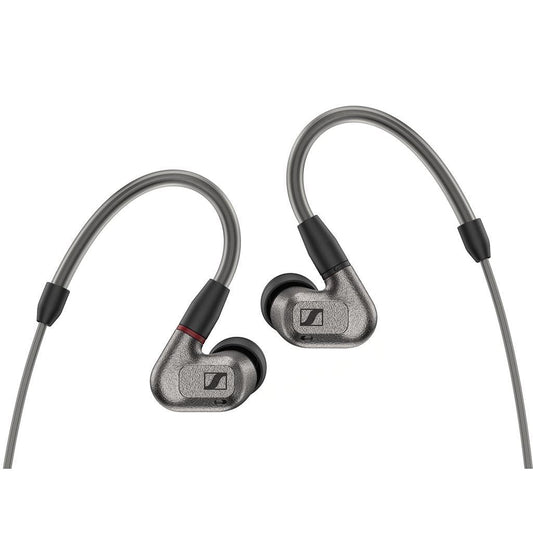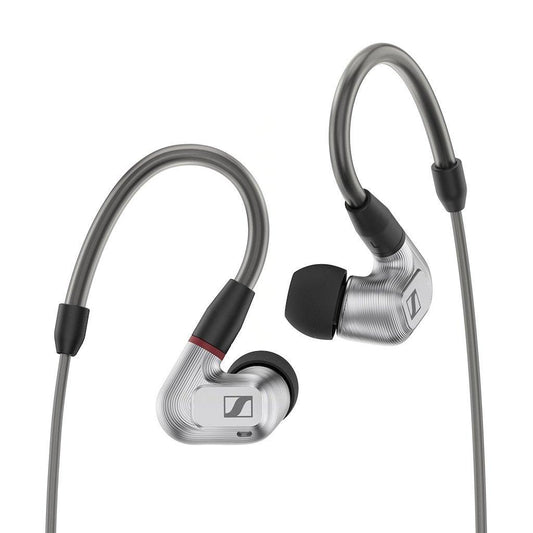Sennheiser IE 600 Comparative Review: A Cheaper IE 900?
The Sennheiser IE 600 is the 2nd IEM in Sennheiser's modern IE line-up. At $800, it's a little more than half the price of the flagship IE 900. The question is, what are you giving up? Fc-Construct takes a deep dive to see if the IE 600 is just a cheaper IE 900 or if there are key differences you should be aware of.
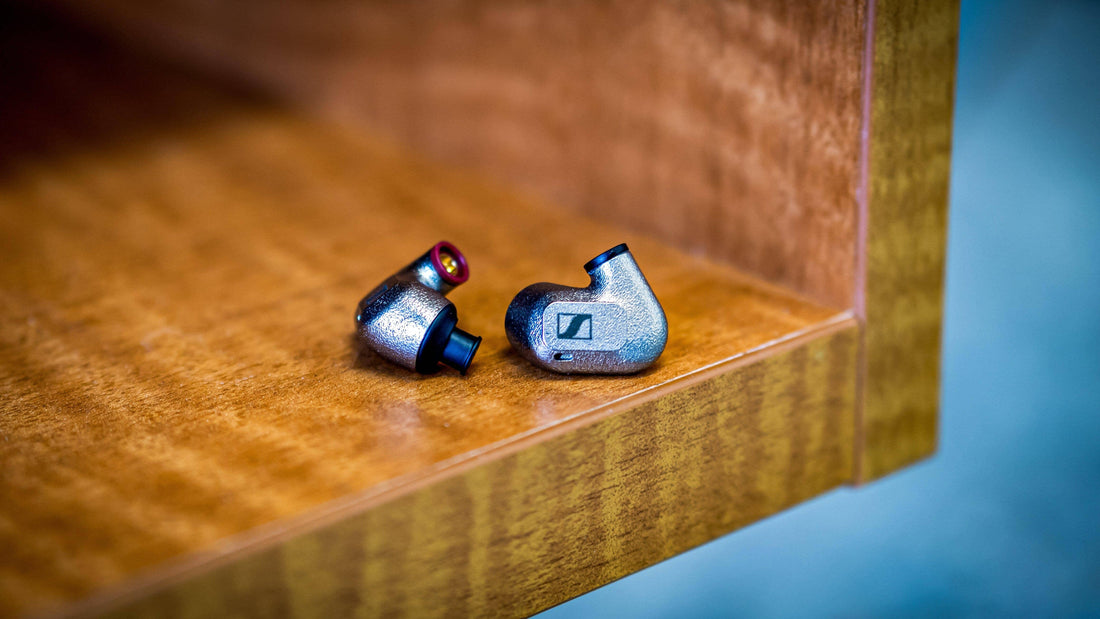
Introduction
The flagship $1,500 Sennheiser IE 900 has always overshadowed its $800 younger brother IE 600 for me. It’s not that I didn’t care for it - it’s just that if I had a chance to demo them at a shop, I’d always pick the IE 900 to remind myself of the awesomeness of its bass. But now that I’ve gotten a chance to properly review the IE 900, it’s time to set my sights on the IE 600. Specifically, I’m most interested in how the IE 600 compares to the IE 900 considering they share a lot of the same DNA. Is it a cheaper IE 900 in a different shell? Or are there meaningful differences, for better or for worse?
This is the 2nd article in my Sennheiser IE line-up series. I strongly recommend you read my review of the IE 900 first because it will set all the groundwork for this review.
Source(s) Used: Ferrum ERCO Balanced DAC & Headphone Amp and Apple USB-C dongle
What we like
- Excellent bass quality
- Tastefully done V-shaped signature with decent mids
- Small, lightweight, and durable
What we don’t like
- Treble can be splashy
- Potentially poor fit
- Semi-proprietary MMCX connectors
What’s in the Box?
The unboxing experience of the IE 600 is very similar to that of the IE 900. The only difference is that you get one less MMCX cable (no 2.5 mm version). Here’s the full list:
- A set of S/M/L silicone tips with foam filters inside to both help tone down the treble and prevent earwax from falling in.
- A set of S/M/L foam tips with the same foam filters inside.
- Two proprietary MMCX cables with 3.5 and 4.4 mm terminations. They’re basic cables with moldable earhooks. The sheathing material is sticky and there’s unfortunately quite a lot of cable noise but at least cable memory is minimal.
- A zippered carrying case.
- A little cleaning tool, a shirt clip, and a microfibre cloth.
- The IE 600 itself, made with a 3D printed “resilient AMLOY-ZR01 amorphous metal housing”. It’s a zirconium alloy.
Given that the IE 600 has essentially the same accessory set as the IE 900, I have the same set of complaints. I’ve put it in the Appendix to try and help reduce the length of this review but I strongly recommend you read it because it will impact whether or not you buy this IEM.

The acoustic design of the IE 600 is quite different from that of the IE 900. While they both have a single dynamic driver and share Sennheiser’s 7 mm TrueResponse transducer, the IE 600 uses a dual two chamber absorbers (D2CA) system instead of the IE 900’s X3R transducer system. I presume that the reason for this difference is that the 3D printed alloy nature of the IE 600 precludes the X3R system which was milled directly into the shell of the IE 900.
Anecdotally, I had a chance to speak with a Sennheiser rep at a local audio show where I asked him about the differences between the two. To paraphrase: Sennheiser received feedback that the IE 900 was too revealing for the average listener and so to develop the IE 600, they reworked the voice coil of the IE 600 to smoothen out the sound and make it more enjoyable for a larger audience. When I asked him what they did to rework the voice coil, he brushed me off saying I must work for a competitor. Oh well. Sounds a bit like marketing fluff to me, and it is odd that he didn’t mention the obvious acoustic differences that Sennheiser has in their marketing material. Make of it what you will.

Sound and Frequency Response
Here is the frequency response of the IE 600 compared to the IE 900, taken on a clone IEC-711 coupler. Keep in mind these graphs are calibrated and a perfectly flat line at 0 equals the diffuse field head-related transfer function (DF HRTF), the anatomical baseline compensation for headphones/IEMs. The wide grey bands are preference bounds that represent listening research that suggests the limits of how much deviation/tonal color a headphone could have that people still found acceptable without it starting to be perceived as imbalanced. Here’s a great video primer if you want to know more about what that means.
As we can see, the biggest difference is that the IE 600 has significantly more upper mids and remains within the preference bounds. Not only are you going to find the IE 600 more mid-forward, it also means that you’re less likely to perceive the IE 600’s midrange to be tonally colored compared to the IE 900. The other point of interest is in the treble where the IE 600 seems to graph with more energy. But in my ears, these differences aren’t quite as straightforward as it might appear. For its overall tonality, I’d actually classify the IE 600 as a mild V-shaped IEM rather than a U-shaped one like the IE 900 because I find it has less subbass emphasis and a splashier (though not perceptually brighter) treble than the IE 900.
Bass
In my review of the IE 900, I was effusive with my praise of the IE 900’s bass. I think it’s some of the best bass you can get in an IEM. There’s unparalleled subbass heft, exceptional rawness, and fantastic texturing. I had my fingers crossed that the IE 600 would be the same.
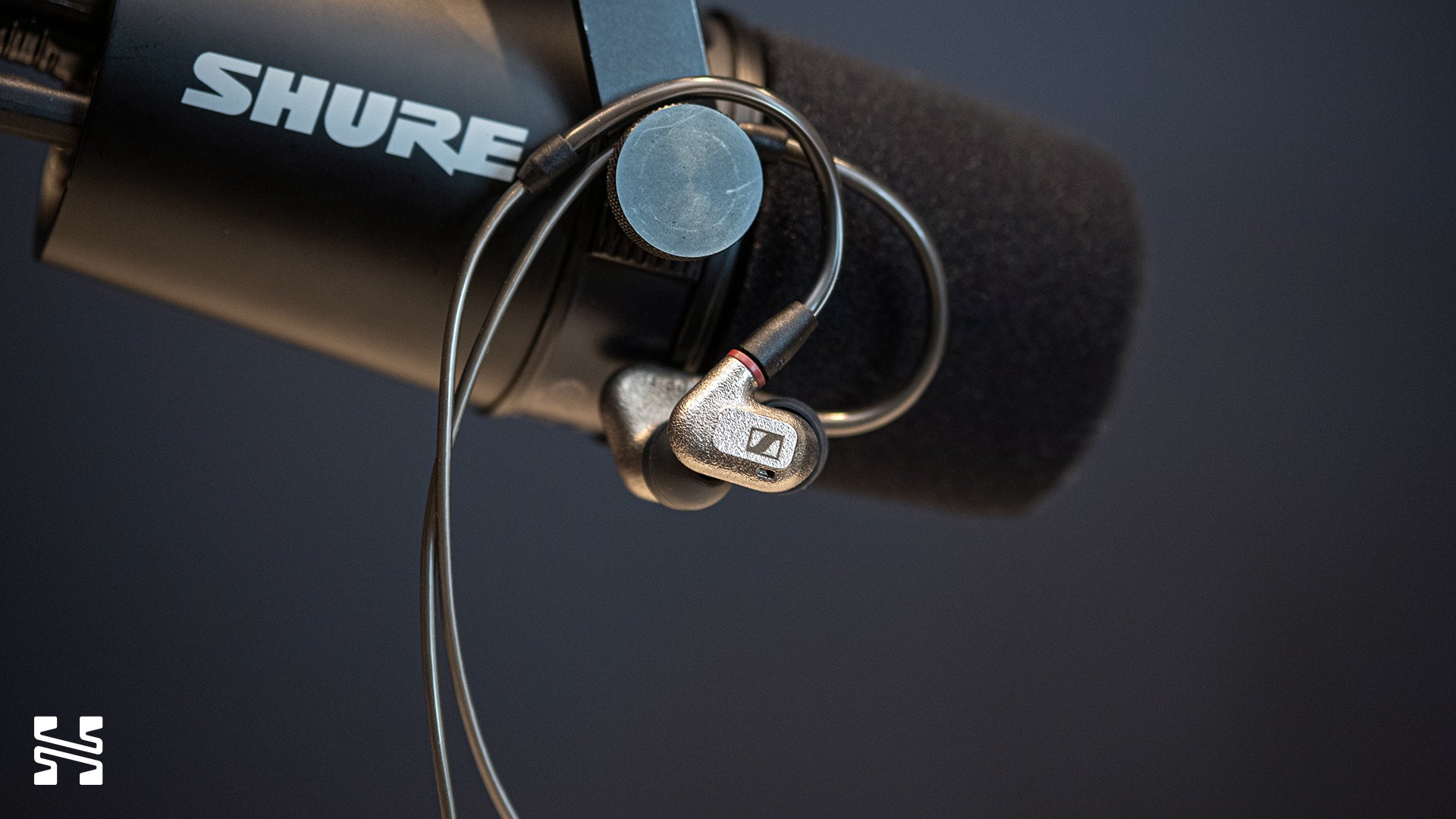
It’s not. However, it does have a lot of the same DNA. There’s a similar sense of impact and tightness to notes, a firm foundation to every kick of the drum or pluck of the bass guitar’s strings. But it doesn’t have the same level of subbass heft the IE 900 has. It doesn’t have the same extended decay or deep body behind each note. As such, it leans punchier and more midbassy than the IE 900, which is unexpected given how it actually graphs with more subbass. Overall, the IE 600 perceptually has less bass than the IE 900. It also doesn’t quite have the same amount of rawness and texturing and is definitely a little smoothed over in comparison.
While it doesn’t meet the extremely high bar the IE 900 sets, the IE 600 still has excellent bass quality. I’d even say it’s among the best for IEMs under $1,000. It’s clean and authoritative, never lingering longer than it needs to. Its leading transients have a hint of explosiveness that the IE 900 somewhat lacked. The dynamic ability of the IE 600 feels natural and unimpeded, unlike other offerings I’ve heard where there’s a sort of compressive straining or is just a function of volume.
Mids
The IE 600 has a reasonably good midrange. However, its timbre is still not quite as good as other “neutral” sounding IEMs. I hear a bit of a “vocal front” where the vocal body is pushed forward a touch instead of being blended in seamlessly in the mix. The calibrated graph shows it quite well as a big hump between 1 - 2 kHz and then followed by a dip around 3 kHz. It’s not anything unusual in IEMs, just a little quirk in its tonality and one I’d apply a light EQ to fix. Outside of the vocals, I’m less sensitive with most instruments and didn’t have any complaints there.
Importantly, the IE 600 addresses the biggest problem with the IE 900: the midrange tonality. It fills in the hole in the midrange to give it a much more normal tonality. The raw graph of the IE 600 and IE 900 illustrates this. That difference in the midrange presence affects not only overall tonality but also the presentation of the IEM itself.
I strongly suspect this is why the IE 600 sounds less bassy than the IE 900 - I have to turn up the volume on the IE 900 more than the IE 600 to hear the midrange, which consequently increases the bass and treble. Hence my characterization of the IE 600 as a mild V-shape vs. the IE 900’s U-shaped signature.
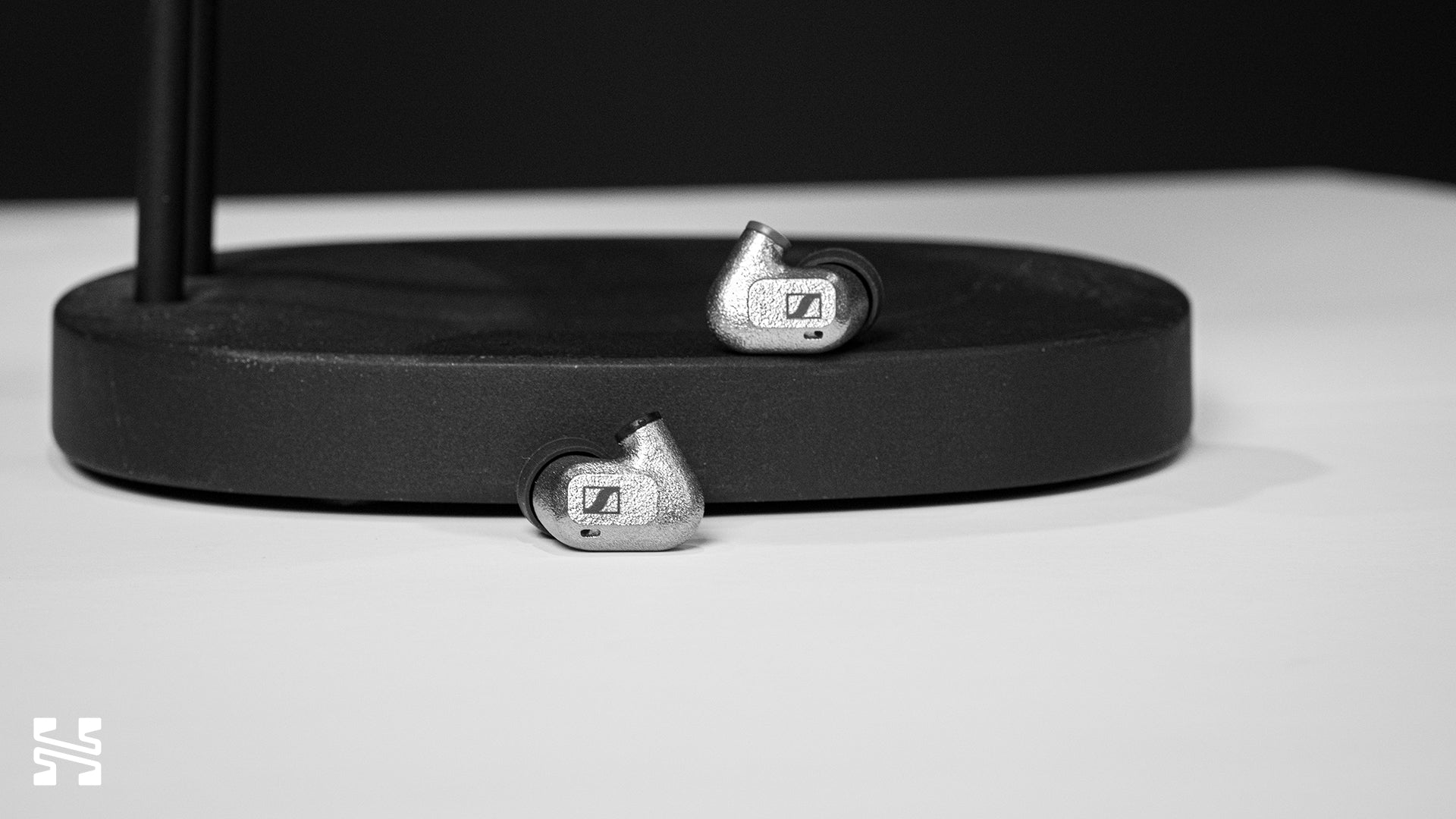
Treble
Like the IE 900, the treble of the IE 600 has a similar broadband elevation. It’s bright and adds vividness without being fatiguing for me. From the graphs, it peaks a little bit more than the IE 900. But as discussed, I don’t actually hear it as being more prominent once I get into comfortable listening volumes for each. What’s interesting is that I hear it as a little splashy, with the middle body of the hats and cymbals overshadowing the initial attack and decay. It doesn’t have the same note balance as the IE 900 does in the treble, nor the sense of rawness and texturing.
And like the IE 900, the stock tips have a small foam insert in them to help tame the treble. You can see the difference in the graph below - generic silicone tips elevate the treble by about 1 dB or so. Since I’m not a fan of the Sennheiser tips, I used aftermarket tips (AZLA Sednas or Divinus Velvets) with the IE 600. I didn’t have an issue with harshness or sibilance but as always, your mileage may vary.
Presentation
The technical performance of the IE 600 is a step down from the IE 900. There’s not one key area where it’s significantly weaker but rather, there are minor incremental improvements across the board for the IE 900 that add up.
The staging of both IEMs is largely the same. Decent for IEMs but nothing outstanding. The IE 600 has a bit more of a centered forward image while the IE 900 sits a little backwards in the stage to give a slight illusion of depth. The IE 900 also has just a touch more separation between instruments. I suspect these differences largely come down to a difference in midrange tuning.
The resolution and dynamics of the IE 600 continues the overall trend of being more smoothed over than the IE 900. While still plenty enjoyable, it lacks that extra layer of oomph or nuance that would elevate it to the level of the IE 900. Once again, I’ll stress that these are very subtle differences. I highly doubt you will find the IE 600 lacking unless you have the IE 600 right next to the IE 900 to do a direct side-by-side comparison like I did for this review.
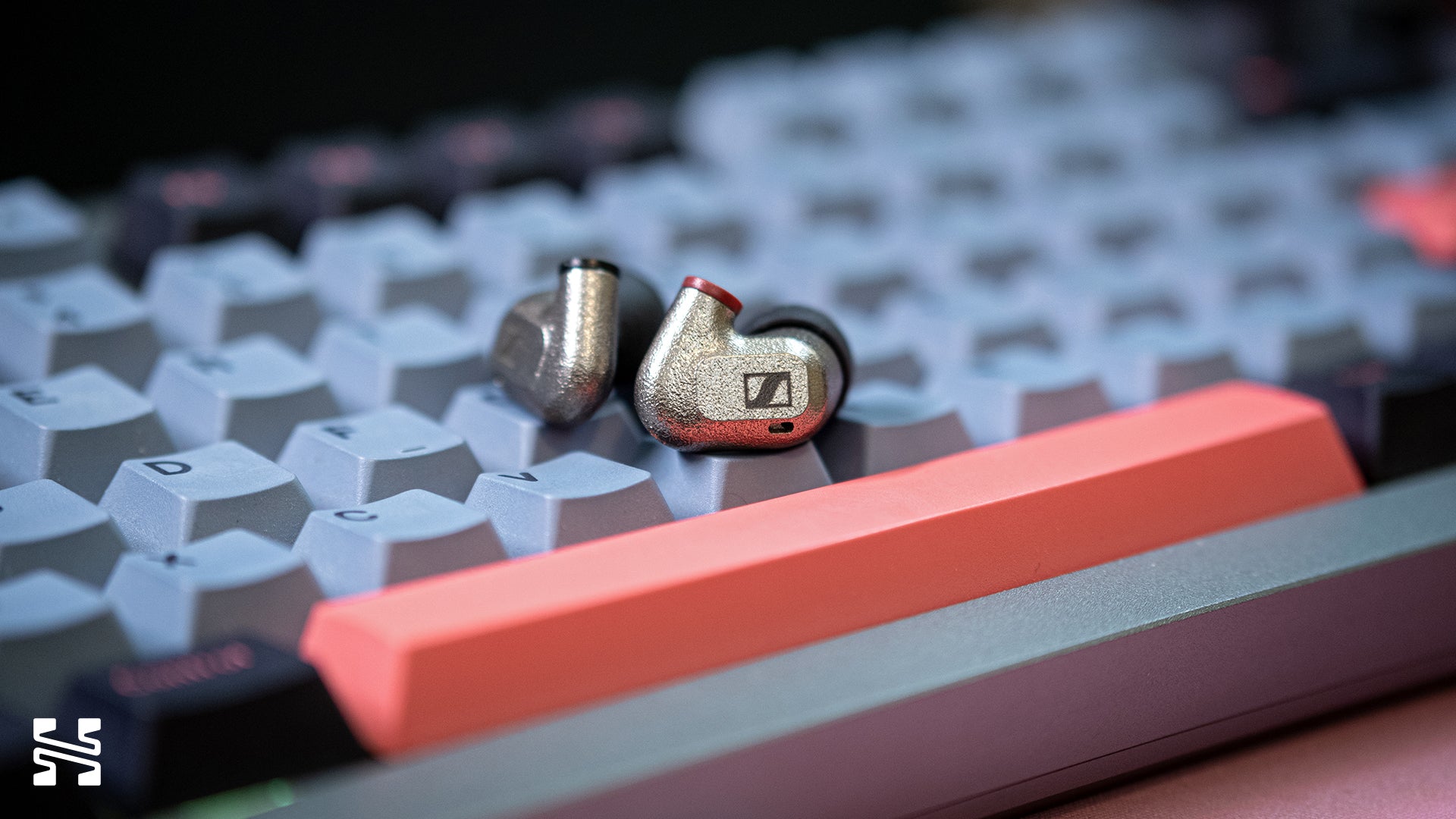
Comparison to the Symphonium x Nightjar Meteor
At $800, the IE 600 is at an awkward price where it’s not quite kilobuck but more expensive than most other midrange products. To further its niche, there aren’t many good V- or U-shaped IEMs these days as IEMs have converged on “target curve” tunings. But there is one reasonable alternative - the $600 4 BA Symphonium x Nightjar Meteor.
While the IE 600’s bass is noticeable and a key part of its sound, the Meteor’s bass is its dominating feature. There’s significant volume that carries into the lower mids to give it a warm, thick sound. It presents quite differently from the IE 600 - the Meteor’s bass leads with a hard, defined transient edge that trails off quickly in its decay whereas the IE 600 has less of that initial attack but a more filled in and rounded note body. I prefer the IE 600’s bass as it comes off as more effortless and natural to me while the Meteor’s feels more like a function of sheer volume.
The midrange of the Meteor is where it comes cleanly ahead. It’s less forward and just excellently tuned. I don’t hear that “vocal front” like I do on the IE 600. Similarly, the lower and mid-treble are significantly more relaxed than the IE 600’s wideband elevation. However, because of this the Meteor can sound somewhat smothered when listening for a longer period of time. It does have an upper treble peak somewhere that gives it a final zing, but I’m not a fan of it as it can sound like an artificial boost since the peak is narrow. I prefer the broader elevation of the IE 600, even if it means being significantly brighter.
In terms of value, the Meteor is $200 cheaper and doesn’t suffer from Sennheiser’s design flaws that makes me hesitate with their IE line-up (see Appendix). From that perspective, the Meteor is an easier and safer recommendation. But if I were to put that aside, I easily prefer the sound of the IE 600. For my tastes, it simply strikes a lot of the right chords. I also think it edges out the Meteor on a technical level for bass dynamics and resolution.
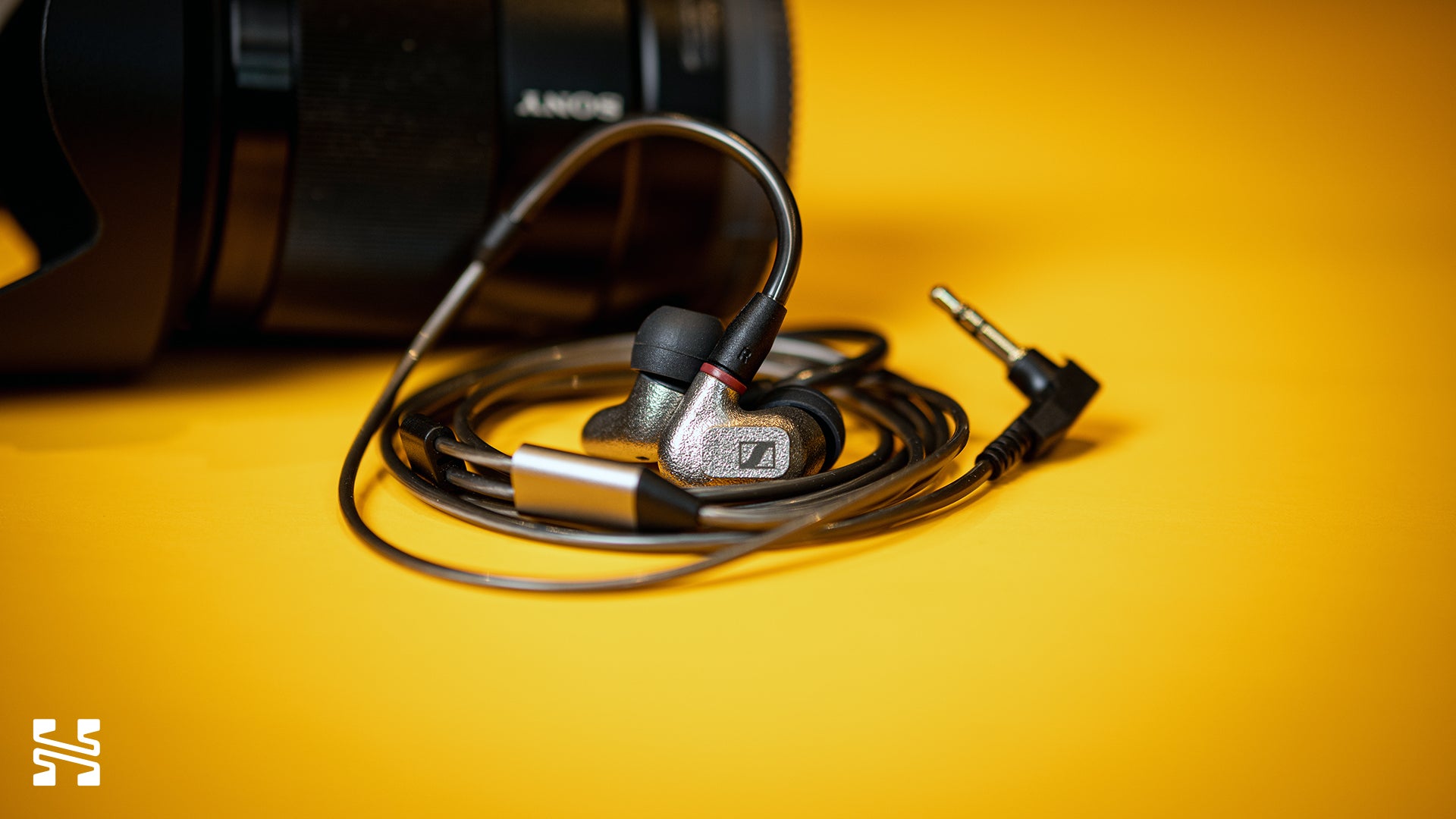
Should You Buy It?
Yes. While the IE 600 doesn’t quite stand up to the level of performance that the IE 900 brings, I’m very satisfied with this IEM. Especially when I consider that it costs almost half as much ($800 vs. $1500). In some ways, it can be a better buy due to its improved midrange tonality, slightly better fit, and smoother sound. I regret that I’ve only paid any real attention to the IE 600 now because it has definitely earned a spot in the IEM buyers guides I write. That said, I do have a final nitpick. Like the IE 900, I would prefer if the IE 600 was priced around $600 to make it more competitive with the MSRP of other midrange IEMs. $800 is a bit too close to the excellent options at around the $1,000 mark. But if you’re looking for this type of V-shaped sound with great bass and can’t afford an IE 900 (or want a better midrange tonality), the IE 600 is the go-to option.

Appendix
The following are the major complaints I have with the Sennheiser IE design. Individually, they aren’t dealbreakers. But it feels like an unnecessary way for Sennheiser to shoot themselves in the foot for their attempt back into the IEM market. I sincerely hope that with future products, or if they do an “S” revision like all their other products, they’ll pay attention to these issues that most other IEMs in the market have resolved.
The Stock Tips
The silicone tips that come with the IE line-up have a rather awkward fit in my ears. I have to position them perfectly to get a good seal. Otherwise, they fold-in on themselves at the edges and leak. This is likely because the silicone they use isn’t like the standard silicone used with almost every IEM tip. Instead, it’s some sort of thin, flimsy, smooth, and slippery feeling material. As such, if you ever try to demo this at a shop, you might have a hard time getting a good result without spending some time to ensure a good seal. That was my experience the first time I ever tried it and had to resort to some aftermarket tips like the AZLA Sedna’s, at the cost of the foam filters that help tame the treble in the stock tips.
The Proprietary MMCX Connectors
The IE line-up uses MMCX connectors. However, Sennheiser has chosen to slightly recess the MMCX jack so there’s a small protruding collar just outside of it. This prevents most aftermarket cables, which are typically flush at the MMCX termination, from connecting. Sennheiser’s own cables are protruded slightly to fit.
This isn’t the first time a big company has done this with their IEMs - the Sony IER line-up comes to mind. But those IEMs were more accommodating, with a deeper recession and wider collar to allow standard cables to fit. The IE line-up offers no such convenience. Presumably, this is why the IE 900 includes three cables since you’re not going to easily find new cables that will fit.
To make matters worse, these recessed MMCX connectors seem to have connectivity issues. Sometimes when I move my head, the sound cuts out for a split second. From what I understand, this is an issue with the stock cable as aftermarket cables don’t seem to have this problem.
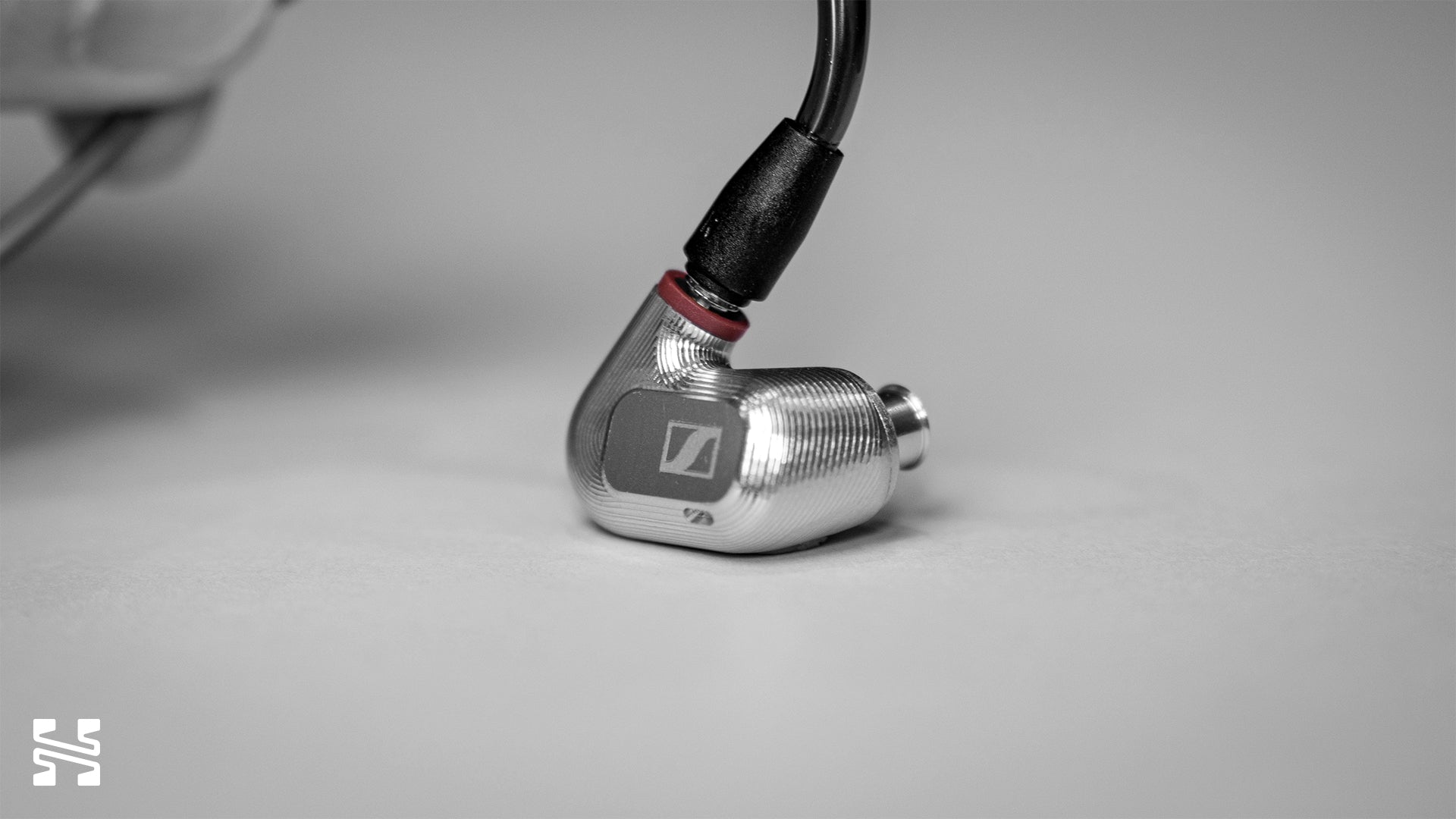
Ergonomics and Shell Design
The shell of the IE line-up is rather small and would look like it fits very well, being modeled after stage IEMs. The problem however is the size and angle of its nozzle relative to the body of the shell. I find it fits in at a bit of an awkward angle and isn’t quite as natural to insert as other IEMs I’ve used to. I’m not able to get it to fit in as deeply as I would like. With the IE 900 specifically, if I push it in further for a deeper fit, the milled body of the shell starts to dig in against my ear and become uncomfortable. Sometimes even painful. Some people might not have an issue with the fit, especially when trying it on quickly at a demo shop, but it’s something to be aware of.
Fakes
This isn’t something Sennheiser has any control over but it is an important thing to be aware of with the IE line-up. Given the popularity of Sennheiser products, there’s been a number of fakes floating around of the IE 900 that I’ve seen. Presumably the IE 600 and IE 200 have their share of fakes too. Do buy from a reputable vendor if you plan on picking one up. If the price is too good to be true, it almost certainly is. There’s a few discussion threads online on how to spot fakes so I recommend you do your research if you do choose to buy from a less than reliable source.
